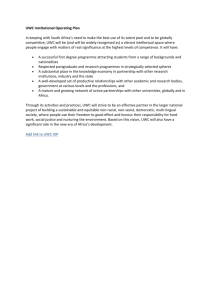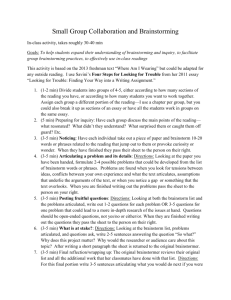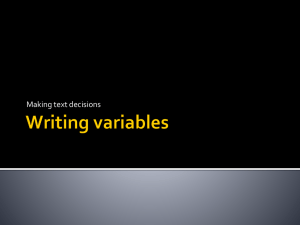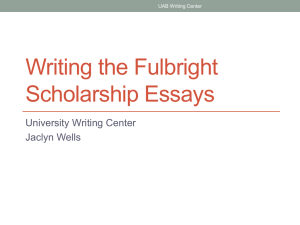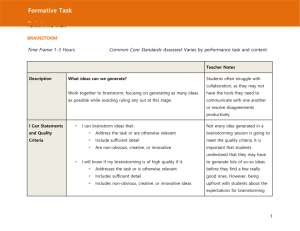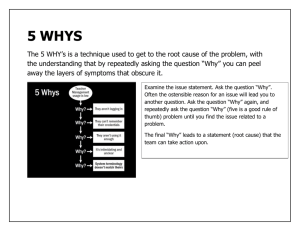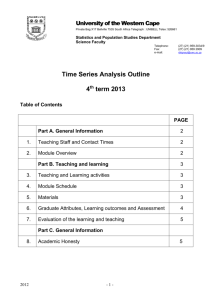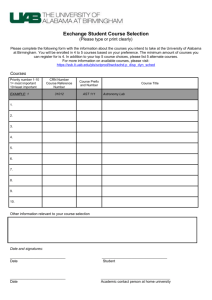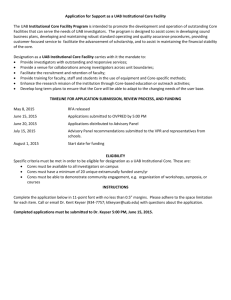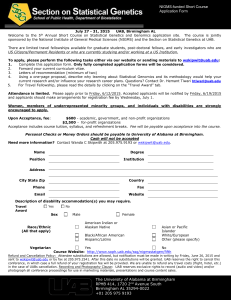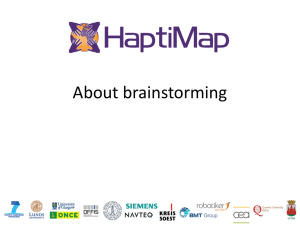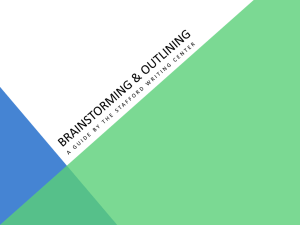Fulbright Scholarship Essays: An Introduction
advertisement
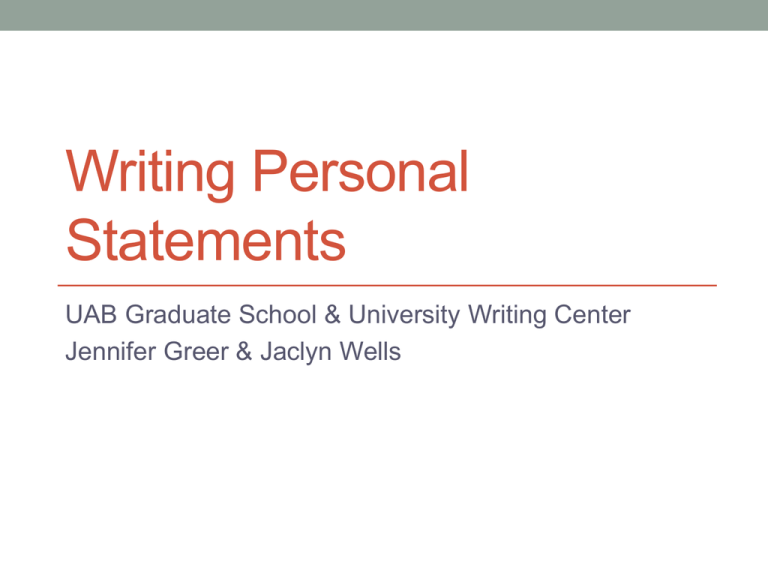
Writing Personal Statements UAB Graduate School & University Writing Center Jennifer Greer & Jaclyn Wells Today’s Agenda Thank you for joining us! Today’s workshop will provide strategies and practice for writing personal statements for graduate school applications. Today, we will: • Discuss the personal statement genre • Look at examples • Brainstorm ideas • Perform two writing activities: one to help you write a good “hook” and one to help you organize your ideas. Dissecting the Instructions In this process, it is crucial to slow down and make sure you really understand what you’re being asked to do. Let’s begin, then, by simply looking at the instructions. Below are UAB Grad School’s general instructions for the personal statement. [Note: You have around 600 words— roughly two double-spaced pages—to write.] Please write a brief summary of your academic interests, career goals, and relevant background experience. What key words stand out? Dissecting the Instructions As you considered the instructions, you may have noticed the following: • “Academic interests” are listed first. This is significant: Most importantly, this document should help the reader gain insight into your academic interests. • And next? Career goals. This document should help the reader understand your career goals. • Finally, relevant background experience. You have lots of experiences that you bring to this document. You want to present the background experiences that are most relevant to your academic interests and career goals. Sample Personal Statement Let’s look at an example. The example we’ll look at is a before-and-after: Sample Essay B is the first version, and Sample Essay A is the improved second version. As you read through both essays, think about what is working well and what is not working well. As you read through Sample A, make checkmarks where you see the writer describing her: • relevant background experiences • academic interests • career goals Past, Present, Future Just for the sake of brainstorming, it can be useful to think about these three areas as past, present, and future. • Your background experiences are your past. • Your academic interests are your present. • Your career goals are your future. Let’s brainstorm for a few minutes. On notebook paper or in a Word document, create three columns for these categories. Spend a few minutes listing in each category— don’t filter yourself at this point! Brainstorming On a piece of paper or in a Word document, create three columns (see below). Spend a few minutes listing ideas for each area. Don’t filter yourself at this point! Past: Background Experiences Present: Academic Interests Future: Career Goals Brainstorming: Personal Statement Consider the following questions to add to your list of ideas. Again, don’t filter yourself—this is only pre-writing. • What details of your life have shaped it most? People? Places? • • • • • Events? Circumstances? What obstacles have you had to overcome? What educational, professional, or cultural opportunities have you experienced? What have been your life’s “turning points”? What are your perspectives or philosophies? What are your major goals? Finding Your Larger Theme Now that you have a list of ideas, give yourself a few minutes now to think about how it all fits together. • What in your lists seems most important? • How do the background experiences (past), academic interests (present), and career goals (future) fit together? • Can you think of any stories to show your experiences, interests, and goals? • Do you see a larger themes emerging? General Style Tips For specific help with editing, see a UWC tutor. Because everyone struggles with different issues of style and correctness, one-on-one help is always best. You probably don’t need to hear that you need to proofread carefully before submitting your application: Your essays should be error-free. Some less obvious style tips include: • Avoid clichés. • Use strong actors (nouns) and actions (verbs). • Consider using the paramedic method to eliminate wordiness, particularly for the statement of grant purpose. Tips and Other Resources • The Purdue OWL offers many resources on writing personal statements. Their “Top 10 Rules and Pitfalls” might be particularly useful. • A number of websites offer sample personal statements. Look at samples from universities instead of commercial or personal websites—universities will offer the best samples. You can also find samples that are specific to your area of study and/or level. How the UWC Can Help The University Writing Center provides free writing consultations. For personal statements, getting feedback can be very useful. We can help you: • Brainstorm ideas • Develop an outline • Begin drafting • Revise and edit The UWC will reopen for the fall on Monday, August 26 at 9:00 a.m. Please see our website to make an appointment: www.uab.edu/writingcenter Thank you! Thank you for attending today’s workshop! Best of luck in drafting your personal statements. Like us and follow us: UABWritingCenter UABWritingCntr
